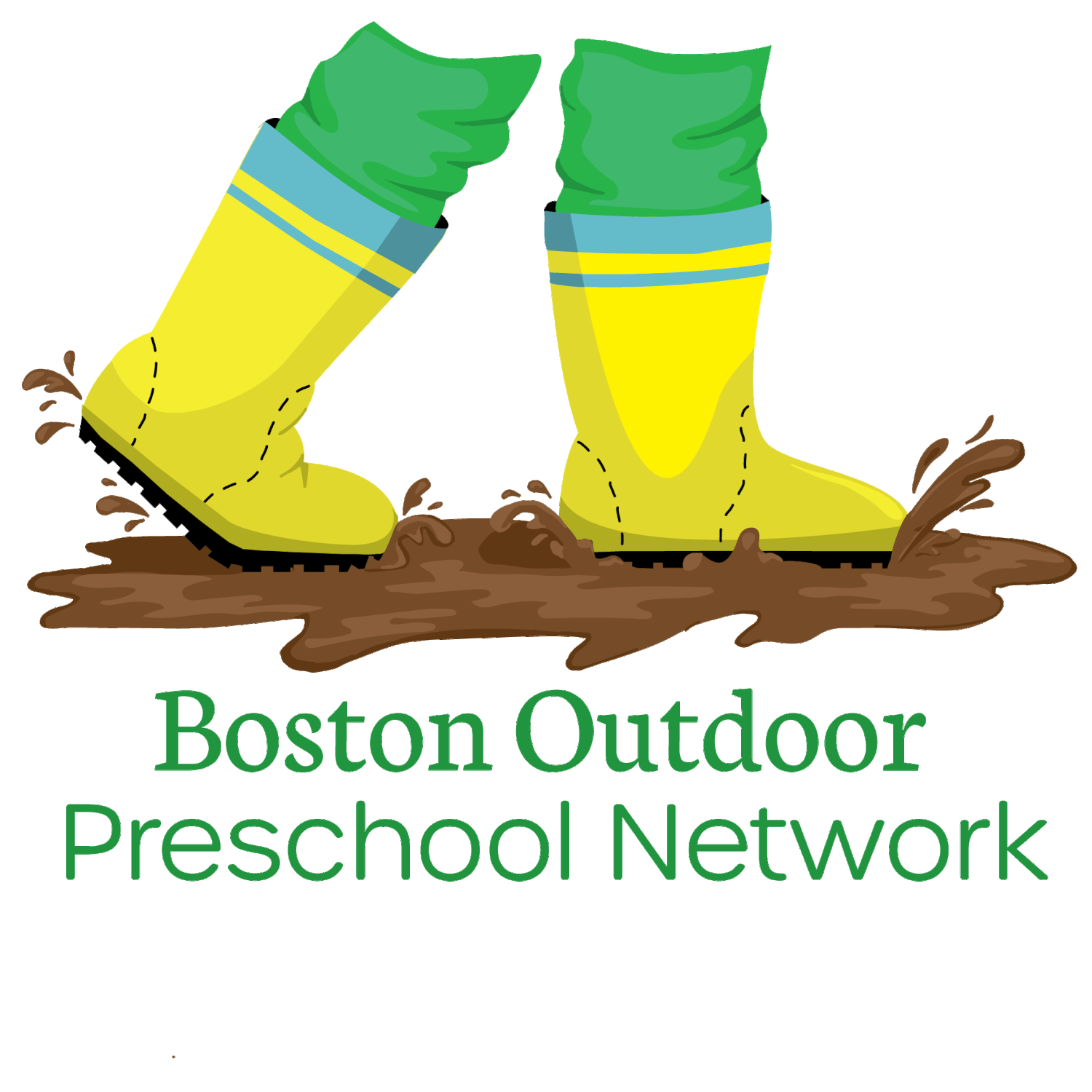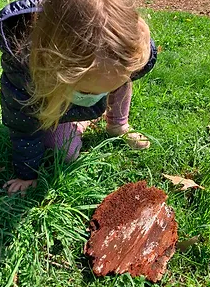Nature's Curriculum
One winter day, I was out hiking with my students and one child excitedly pointed to animal tracks in the snow and asked “who made those prints?” Other children quickly gathered around and we began to discuss the size and shape of the print, and our ideas about how the animal might have been moving. This led the children to search to find more tracks in the snow. The next day, I brought in animal track guides to compare the tracks we are discovering, and provided small beads, gems, and other loose parts for children to recreate or design their own animal tracks. Many children drew their own animal track cards with markers at the easel, practicing sounding out words as they wrote down the animal names. For weeks after, we played games where we moved like different animals in the snow to see what tracks we could make, predator-prey games using local animals such as Hawk and Squirrels, built various habitats with sticks and rocks such as a burrow for a rabbit, and read and acted out stories about forest animals. This is what emergent curriculum looks like in nature school!
Being outdoors provides opportunities for hands-on learning that are not attainable when confined within four walls. Children have a chance to use all of their senses, observe, wonder, make predictions, and form connections when playing outdoors, and it often happens without adult initiation. True emergent curriculum recognizes that children learn best through play and need uninterrupted time in nature to explore and discover what they are interested in. The role of the teacher is to wonder about the world alongside children, ask open-ended questions that encourage the children to think critically and develop ideas, and thoughtfully plan learning experiences based on these interests that invite children to explore more deeply and in different ways.
Children’s play informs our curriculum planning-- each child is a researcher and teachers provide tools and opportunities for them to deepen their learning. This collaborative process is not only through long term projects such as the animal tracking study, but also through everyday interactions with the natural world. Collecting and sorting natural loose parts, planning and designing a stable bridge out branches to get over a large puddle, making letters and shapes with twigs, and sharing ideas about what slugs might eat are all examples of the meaningful, constructive learning experiences that emerge outdoors.
We trust the valuable learning that organically occurs during child-led experiences. And much like other preschools and early childhood programs, nature-based programs weave developmental skills and learning objectives into emergent curriculum experiences. However, instead of using adult-initiated themes, we use the interests of children and the seasonal changes they are noticing to explore while honing motor, cognitive, language and literacy, and social-emotional skills. Authentic learning starts not only within the natural world, but within the child-- it is our aim to respect and honor their ideas, opinions, and imaginations.

